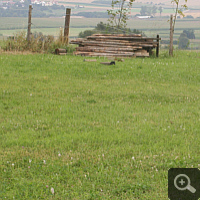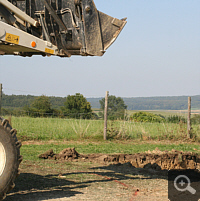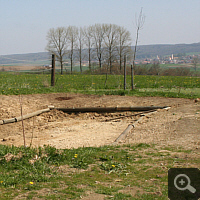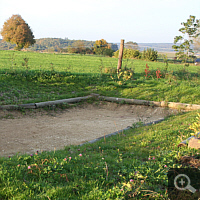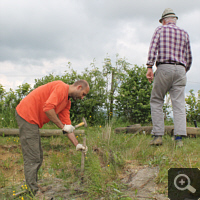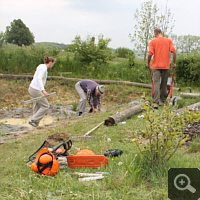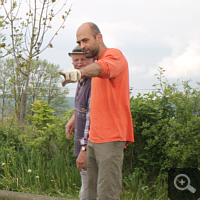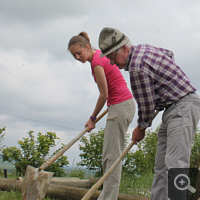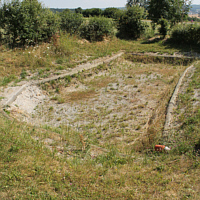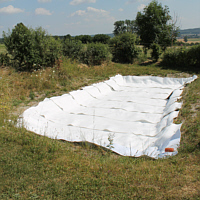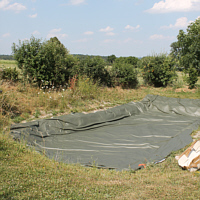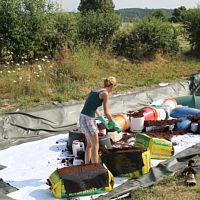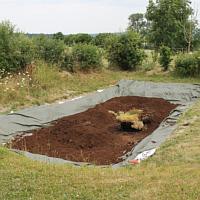Raised Bog Bed
Overview
In the long run, a raised bog can evolve from a fen. Precondition therefor is, that the annual amount of precipitation exceeds evaporation and also drain of water. In this case, a scrub encroachment of the fen occurs at first, a fen wood evolves, in which peat mosses (Sphagnum spec.) settle bit by bit if a annual excess water is present. These secrete protons, so that they acidify their environment, whereby they reduce the competitive pressure by other plants. The peat mosses are rootless and grow continuously. At the same time, they die back in the depth. By a relative oxygen deficit occurs only an incomplete rotting, so that a thin peat layer deposits annually. This growth occurs only very slowly, a healthy bog grows up only one millimetre each year. By a continual peat deposit the bog sometime rises above the surrounding and eludes in this way ground water influence.
Thereby it becomes not only acidic but also extreme low in nutrients, because water supply is refilled only by rain water and not any longer by mineral-rich ground water. Bog’s evolution has now reached its final stage, it has evolved into a the surrounding some towering raised bog and is biotope of numerous highly specialised plants. Some species have developed insect catching as additional nutrient source, so you can find in Germany within raised bogs among others several sundew species.
Project
Explanation of construction and schematic representation
The ground of the building pit was at first levelled carefully and greater stones were gathered up. Then a circa four centimetres high sand layer was applied, whereon a fleece and the pool liner were applied. Next the internal water reservoir was integrated, which consists of a great number of perforated buckets and halved canisters. Then bed was filled half with rain water, later interstices between the containers of the internal water reservoir with wet peat and a circa ten centimetres high peat coating put up on top. But this did not happen planar to can cope with plants with different demands. In addition to small hills (earth hummocks) were also slots and small ponds as open water reservoir modelled.
The internal and open water reservoirs are regularly refilled in the case of rainfalls additonally by an external water supply. During dry periods the stored water gets by capillary action of the peat gradually to substrate surface, whence it eventually evaporates.

From south an underground pipe carries rain water, which gets in the pipe over a downspout from the roof of a shed, to the bog bed. In order that a slight slope for the water supply is constituted, the raised bog bed was built something below the earth level.
The bank roundabout was flat removed and tilts smoothly downwards to the bed. The bed is roundabout marked out from the bank by interconnected roundwood beams, which prevent on the one hand, that soil from the outside is illuviated into the bed, and on the other hand should reduce the growth in of grasses and other plants.
Suitable plants for an all-year outdoor culture
To different tables with plants with plants, which are suitable for an all-year outdoor culture within a bog bed, you get here.
Development
The project is not yet realised completely. As soon as experiences exist, I will publish them on this webpage.

